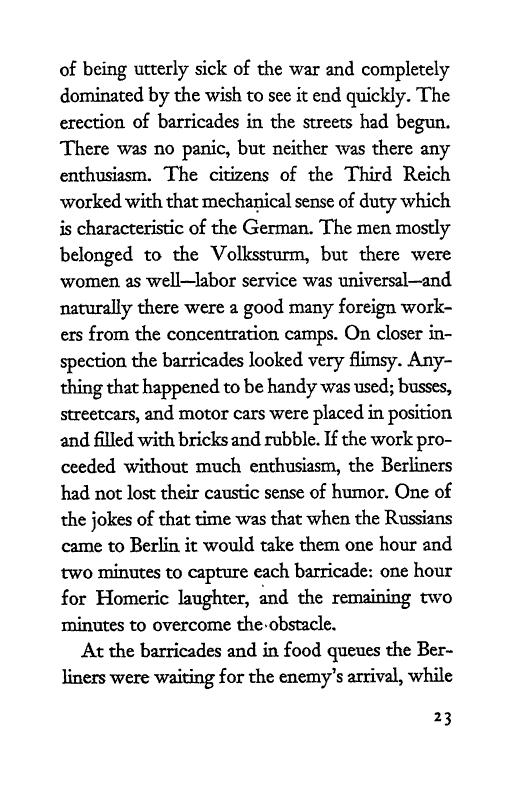Note: Translator Eric Lewenhaupt died in 1968, less than 70 years ago. Therefore, this work is protected by copyright, restricting your legal rights to reproduce it. However, you are welcome to view it on screen, as you do now. Read more about copyright.
Full resolution (TIFF) - On this page / på denna sida - Berlin February 1945

<< prev. page << föreg. sida << >> nästa sida >> next page >>
Below is the raw OCR text
from the above scanned image.
Do you see an error? Proofread the page now!
Här nedan syns maskintolkade texten från faksimilbilden ovan.
Ser du något fel? Korrekturläs sidan nu!
This page has been proofread at least once.
(diff)
(history)
Denna sida har korrekturlästs minst en gång.
(skillnad)
(historik)
of being utterly sick of the war and completely
dominated by the wish to see it end quickly. The
erection of barricades in the streets had begun.
There was no panic, but neither was there any
enthusiasm. The citizens of the Third Reich
worked with that mechanical sense of duty which
is characteristic of the German. The men mostly
belonged to the Volkssturm, but there were
women as well—labor service was universal—and
naturally there were a good many foreign
workers from the concentration camps. On closer
inspection the barricades looked very flimsy.
Anything that happened to be handy was used; busses,
streetcars, and motor cars were placed in position
and filled with bricks and rubble. If the work
proceeded without much enthusiasm, the Berliners
had not lost their caustic sense of humor. One of
the jokes of that time was that when the Russians
came to Berlin it would take them one hour and
two minutes to capture each barricade: one hour
for Homeric laughter, and the remaining two
minutes to overcome the obstacle.
At the barricades and in food queues the
Berliners were waiting for the enemy’s arrival, while
<< prev. page << föreg. sida << >> nästa sida >> next page >>